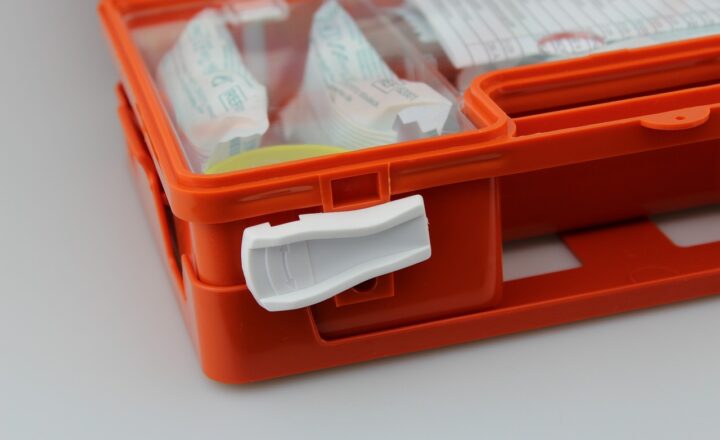The Importance of Emergency Medical Technicians in Saving Lives After Accidents
November 14, 2024

Emergency Medical Technicians (EMTs) are the unsung heroes of our healthcare system, playing a crucial role in saving lives during emergencies, particularly after accidents. Their swift response, medical expertise, and compassionate care are vital components in the chain of survival. This article explores the pivotal functions of EMTs, the challenges they face, and their indispensable impact on outcomes during critical incidents.
1. The Role of Emergency Medical Technicians
EMTs are trained professionals responsible for providing immediate medical care to individuals experiencing a medical emergency. Their roles encompass a variety of tasks, including:
- Assessment of Patients: EMTs evaluate the condition of patients to determine the level of care needed. They assess vital signs, check for consciousness, and identify any visible injuries.
- Provision of Basic Life Support (BLS): They administer first aid, CPR, and other basic life support techniques to stabilize patients before they reach a medical facility.
- Transportation to Medical Facilities: EMTs ensure the safe and rapid transportation of patients to hospitals, all while continuing to provide necessary medical care en route.
- Collaboration with Other Emergency Services: They work closely with paramedics, firefighters, and law enforcement to ensure a coordinated response to emergencies.
These responsibilities underline the importance of EMTs in the emergency response system, reinforcing their role as the first point of contact for victims in critical situations.
2. The Vital Link in the Chain of Survival
The ‘Chain of Survival’ is a concept that emphasizes the critical steps involved in responding to a medical emergency, and EMTs serve as a vital link within this chain. The steps typically include:
- Early Recognition and Call for Help: The sooner individuals recognize that a situation requires emergency assistance, the better the chances of survival. EMTs are dispatched immediately to provide rapid response and care.
- Early CPR and Defibrillation: The importance of CPR in saving lives cannot be overstated. EMTs are equipped to perform CPR and use automated external defibrillators (AEDs) to restore heart function in the event of cardiac arrest.
- Early Advanced Care and Transport: After initial assessment and stabilization, EMTs transport patients to the hospital, where they can receive further treatment. Their involvement during transport is crucial for monitoring and maintaining the patient’s condition.
Statistically, timely intervention by EMTs significantly increases the chances of survival for trauma victims. Research indicates that the odds of survival drop dramatically for every minute without intervention following an accident. This urgency highlights the critical importance of immediate medical response.
3. Skills and Training of EMTs
Becoming an EMT requires rigorous training, where they acquire a diverse skill set to perform their duties effectively. Key skills include:
- Medical Knowledge: EMTs learn about human anatomy, physiology, and emergency protocols to deliver effective treatment.
- Technical Skills: They are trained to operate medical equipment, administer injections, and perform minor procedures, such as wound dressing and splinting fractures.
- Communication Skills: Effective communication with patients, family members, and other healthcare professionals is essential to ensure seamless care on the scene and during transport.
- Crisis Management: EMTs must remain calm under pressure, making quick decisions to assess and address patients’ needs rapidly.
This extensive training prepares EMTs to handle diverse medical emergencies, ensuring they are equipped to manage patients’ needs effectively during critical moments.
4. Challenges Faced by EMTs
While EMTs play a heroic role in emergency care, they face numerous challenges that can impact their ability to perform. Some of these challenges include:
- High-Stress Environment: The nature of their work often involves high-stakes situations and traumatic scenes, which can take an emotional toll over time.
- Limited Resources: In some cases, EMTs may arrive at an accident site with limited medical supplies or assistive technology, which can hinder their ability to provide optimal care.
- Long Hours and Fatigue: The demanding schedules and on-call nature of their job can lead to physical and emotional exhaustion, impacting overall performance.
- Increasing Call Volumes: EMTs often handle a growing number of emergency calls, putting additional pressure on them during critical interventions.
Addressing these challenges is crucial to ensuring that EMTs can continue providing the care necessary to save lives in emergencies.
5. The Future of Emergency Medical Services
As healthcare continues to evolve, so do the roles of EMTs. New technologies and medical practices are transforming the way emergency medical services operate:
- Telemedicine Integration: The use of telemedicine is allowing EMTs to consult with medical professionals remotely, gaining real-time guidance on complex medical situations while en route to a hospital.
- Advanced Training Programs: Continued education and training in advanced life support and trauma care are being implemented, enabling EMTs to expand their scope of practice and provide better care.
- Utilization of Drones and Technology: Emerging technologies, like drones, are being explored for use in delivering medical supplies or even assisting in outreach efforts during large-scale emergencies.
These progressive changes signal a bright future for EMTs and highlight the ongoing adaptation of emergency medical services to meet the growing needs of communities.
Conclusion
Emergency Medical Technicians are essential in the effort to save lives after accidents. Their quick response, medical expertise, and compassionate care make a significant difference in critical situations. While they face many challenges, the unwavering dedication of EMTs ensures that they continue to be the frontline protectors of public health.
As communities recognize the vital role played by EMTs, ongoing support, training, and resources are necessary to empower these professionals in their mission to save lives. The contribution of EMTs cannot be overstated, and as we advance into the future, we must continue to appreciate and uplift those who risk their lives to help others in moments of crisis.








